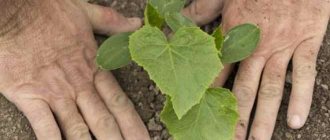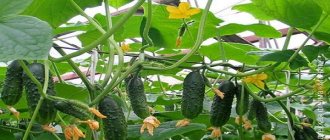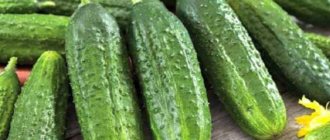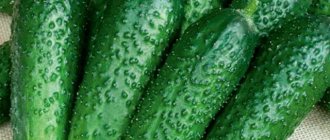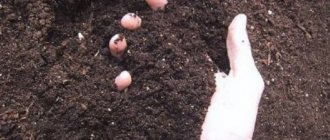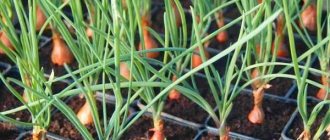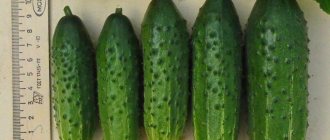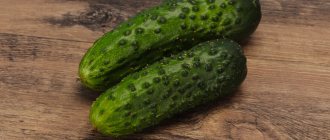In recent years, foreign hybrids have been in increased demand among farmers, especially those who grow onions on large plantations. Among them is the early ripening onion “Hercules” - a first generation hybrid (F1), created by breeders of the seed company Bejo Zaden BV (Netherlands). It was officially included in the State Registers of Russia (in 2006) and Belarus (in 2009). It belongs to the type of pungent plants and is considered universal: the juicy bulbs are widely used in cooking and consumed fresh.
The Hercules onion (pictured) has proven itself well in many regions of Russia, Ukraine, Belarus and other neighboring countries
"Hercules" is adapted to various soil and climatic conditions and is approved for cultivation throughout Belarus, and in Russia - primarily in the Central region. Like most similar hybrids, this variety of crop is characterized by high yield, large bulb size suitable for long-term storage, resistance to diseases and other stressful situations, and therefore is in great demand among vegetable growers and consumers.
The Dutch company Bejo Zaden registers and promotes its proprietary onion varieties and hybrids under “meaningful” names that reflect the quality characteristics of the plants. It is not difficult to assume that the breeders who gave the onion the name of the ancient hero, ranked among the immortal gods for his exploits, wanted to emphasize the exceptional advantages of the hybrid.
Main characteristics
Let's look at the most significant characteristics of the variety in the table:
| Parameter | Characteristic |
| Culture | Onion (Allium cepa L.) |
| Variety/hybrid | "Hercules F1" |
| Ripening time | Very early or early (early ripening): technical ripeness reaches 70-85 days from the moment of emergence; According to some sources, the average is 90-100 days |
| Plant type | Spicy |
| Purpose | Universal |
| Growing conditions | Gardening |
| Productivity | High: 4-6 kg/m2 (up to 8 kg/m2); in industrial plantings – up to 55.7 t/ha |
| Bulb weight | 120-160 g |
| Form | Widely elliptical |
| Scale color | External (dry) yellow, golden-straw; internal (juicy) – white |
| Taste qualities | Excellent: spicy, juicy |
| Storage duration | 6-9 months |
| Year of entry into the State Register of the Russian Federation | 2006 |
| Recommended growing regions | Central (3) |
| Originator | Bejo Zaden BV (Netherlands) |
| Year of entry into the register of Belarus | 2009 |
| Recommended growing regions | All |
Description of the Hercules onion variety
Dutch onion Hercules is a mid-early hybrid that ripens in 70-80 days. The tops grow up to 35 in height. The root system is powerful, thanks to which the onion develops faster and better. Due to its ease of cultivation, it is suitable for young and experienced gardeners.
The bulbs are large, weighing 120-160 g. The shape is an elongated oval. The upper husk is dense, golden yellow in color. The pulp is white, juicy. The taste is sweetish with pungency, not bitter, there is a pleasant aftertaste.
Productivity
In the south of our country, “Hercules” is cultivated as an annual crop, sowing seeds in open ground in winter or spring. In the Middle Zone and the Urals, the best results are obtained using the traditional method of planting seedlings. According to experts, the largest specimens are successful when growing the variety through seedlings.
The yield and marketability of turnips depend on weather and climatic conditions, the mechanical and chemical composition of the soil, and the intensity of agricultural technology used
Insufficient lighting (prolonged cloudiness) and excessive soil moisture can negatively affect the yield indicators and marketable quality of the bulbs.
High shelf life, that is, long shelf life (up to 9 months), makes the variety suitable for professional farmers engaged in commercial production. Ripening after ripening reaches 100%. According to field tests conducted in Belarus, the average marketable turnip yield in a two-year crop was 37.1 t/ha, and the maximum was 55.7 t/ha, which is significantly higher than the Odintsovets and Stuttgarter Riesen standards. The yield of marketable products is 95.2%.
Harvesting
Video: When to plant onion sets in the Urals
The readiness of the onion for harvesting can be easily determined by the condition of the feather. Once the feathers turn yellow and bend toward the ground, the bulbs are ripe. It is very important to dry the resulting crop well. Place the bulbs in the fresh air, where there is good ventilation and access to sunlight.
To preserve onions until summer, you need not only to dry them well, but also to choose the right room. In the room where onions are stored, the temperature should be in the range of +15-20, the air should be dry. With high humidity, the onions will begin to rot. Store onion heads in a well-ventilated container, but not on the floor.
yellow feathers
Commercial and taste qualities of bulbs
The bulbs are aligned, large in size, with a thick neck, dense, broadly elliptical or round in shape with a protruding bottom. Dry (outer) scales are strong, yellow-brown; juicy (internal) – white.
The weight of one onion averages 120-160 grams, they are perfect for fresh consumption and for home processing, as well as freezing and drying
According to reviews, Hercules onions have a spicy, spicy or semi-sharp taste with a classic aftertaste and aroma. According to the results of studies conducted by Belarusian specialists, the heads contain up to 13.7% dry matter, the chemical composition contains:
| Nutrients and beneficial substances | Quantity per 100 g of product |
| Vitamin C (ascorbic acid) | 5.1 mg |
| Sahara | 8.8 g |
| Squirrels | 1.2 g |
Planting by seeds
Seeds for planting Hercules F1 (F1) can be grown from seeds . This process is much more complicated than working with purchased ready-made seedlings; its technology has a number of features.
How to prepare them?
Seeds purchased from a specialty store do not require additional processing before planting. Because they have already gone through this process, as well as sorting. Seeds taken from private individuals must:
- Place in a solution of potassium permanganate for 30 minutes.
- Then add warm water and leave for one day.
If some specimens float up when soaked in water, they should be removed immediately, since such seeds do not sprout.
How to sow?
Sowing is carried out in the last days of March.
- Furrows are made on the surface of the soil, the distance between which is 3 cm.
- The grains are placed in pre-moistened recesses at intervals of 1 cm.
- The planting material is sprinkled with soil on top and sprinkled with water; for this purpose it is best to use a spray bottle.
Care
- Seedlings need good lighting, which they need to provide at least 12 hours a day.
- Watering the seedlings should be moderate, and the soil should be allowed to dry before the next irrigation.
- Grown seedlings are thinned out, freeing them from weak shoots.
- Fertilizing is carried out with mineral compounds intended for seedlings.
- In the second half of April, the onions are hardened: first they are transferred to the balcony or veranda for 1 hour, and then the time spent there is gradually increased to 3 days. The room must be heated.
Recommendations for agricultural technology
Planting material for this variety of crop is offered by many foreign and domestic producers. The main advantages of Hercules seeds are that they produce biologically and morphologically homogeneous plants with aligned bulbs, balanced in size and taste. First-generation hybrids, resistant to various diseases and pests, grow well in open and protected ground, so these seeds are ideal for a small plot in a country house or greenhouse.
In the photo are the seeds and sets of “Hercules” - planting material in packages from various manufacturers
However, first-generation hybrids, compared to varietal vegetables, have one serious drawback - they cannot be harvested for seeds. The fact is that the offspring, due to genetic heterogeneity, will not inherit improved properties. Therefore, seed material is not collected from them, but only purchased material is used, which must be purchased annually. Although it is more expensive than varietal, the quality and quantity of the harvest fully justify the invested costs and labor.
Improved characteristics appear only in the first generation of hybrids, marked with the designation “F1”. According to reviews from domestic vegetable growers, the Hercules hybrid has virtually no drawbacks. The only disadvantage is the high cost of planting material. But these costs are paid off by the quality of seeds and sets, which do not require pre-treatments, demonstrate rapid and massive germination, which ensures high marketable yield.
The originator recommends cultivating this onion in a two-year crop, that is, first, onion sets are grown from seeds, which form a turnip the next year. To obtain a harvest of large bulbs in their summer cottages, many vegetable growers prefer to immediately grow Hercules onions from sets, the characteristics of which meet European standards. Planting is carried out before winter or spring. The method is convenient because sowing is less demanding on moisture conditions than seeds, since the bulb has a supply of moisture for the initial growth of the root system and above-ground parts.
It is recommended to plant at a depth of no more than 5 cm and not too densely, maintaining a distance of 6-7 cm between the heads and 15 cm between the grooves
Basic agrotechnical measures, including weeding, watering, regular loosening of the soil, and application of fertilizers, are similar to the standard care rules recommended for growing onions from sets.
Preparing the bed
Regardless of the chosen variety, you need to plant onions before winter in pre-dug and prepared soil. After digging, the soil should have time to settle and compact a little, only then can you begin to plant. The height of the bed should be about 18-20 cm. A low bed will not save you from frost in winter.
Let's get started:
- For seeding up to 1 cm in size, make furrows 4 cm deep (for light soil) or 2 cm (for heavy soil). We bury the smallest seeds no more than 2 cm. The distance between the furrows should be maintained within 15-20 cm.
- We lower the set into the grooves so that the neck is 1.5-2 cm below ground level. The distance between plants in a row is 8-10 cm. Before planting, the onions are not soaked and the neck is not cut, as during spring planting.
- Cover the top with earth, then you can mulch with humus. This will reduce evaporation and protect the roots from freezing.
- At the next stage, it is recommended to additionally insulate the onions for the winter with sawdust, dry leaves, and spruce branches, which will need to be removed in the spring as the snow melts. During the cleaning process, be careful not to touch the young shoots - they may not be visible under the layer of insulation.
After you have finished planting, there is no need to water the onions. If the weather is dry, you can moisten the soil a little after ten days. After the onset of frost, you can additionally cover the onion with dry branches, which will hold the insulation in place and hold back the snow during the winter months. If the winter is snowy enough, the snow itself will serve as additional shelter. In snowless, cold winters, it is worth additionally covering the top with plastic film.
Planting onions on greens is no different from the process described. The only difference is in the selected variety and the size of the set.
Helpful tips for planting onions in winter:
- Landing time is individual for each region, but on average it is mid to late October (if the ground is not frozen yet).
- It is better to cover the planted onions (mulch) with peat or sawdust with a layer of 2-3 cm to protect the sets from freezing. You can do this a little later, but definitely before frost sets in.
- In winter, you can additionally insulate it with a layer of snow; at temperatures below - 10°C, such protection will not hurt.
- For the same purpose, you can throw grass, leaves, small twigs on top - they will hold the snow well.
- In the spring, remove the cover and make sure that there are no puddles on the surface of the bed; the seedlings may get wet and rot.
Onions planted in winter ripen earlier than spring plantings and usually produce a large, strong onion, regardless of the variety chosen. Insects (onion fly) do not have time to spoil the plants, since by the time they are active, the set has acquired a good root system that is inaccessible to the laying of fly eggs.
Winter onions are profitable and convenient, but it is not always possible to grow a good harvest. This may be the result of a gardener’s mistake (planting too deep or too early, lack or lack of insulation, incorrectly chosen variety) or the vagaries of the weather. In some regions, frosts in winter are so severe that no insulation will help. In practice, you can only understand which varieties will give a good harvest in your garden through trial and error. Try to choose local varieties adapted to weather conditions and follow all the rules for planting and caring for onion beds.
If you prefer to plant onions before winter, then it is important to decide on the variety and choose the right planting material. A sufficient number of special winter varieties of onion sets have now been developed
Small-fraction onions are well suited for winter sowing. Early and medium varieties with a ripening period of 2-3 months are preferred. I have selected the best varieties that are recommended to be planted before winter. They are universal in purpose and suitable for most growing regions.
Reviews from gardeners
Alina, 42 years old, Tver
For several years I have been growing Hercules from purchased Dutch sets and I consider this method the simplest and most effective. We buy only from trusted manufacturers, germination is almost one hundred percent. The earliest ripening variety I have tested. Compared to Centurion, it does not require frequent watering and thinning. Onions quickly grow their root system and green mass, are cold-resistant and unpretentious. The bulbs are poured one to one, calibrated (almost all of my bulbs are 120 g), and they taste pleasantly sweet, with a noticeable sharpness, without bitterness, and are stored for a long time! From each bed (and we have 5 of them) we get up to 8 kg per season. Enough for food, homemade supplies and for sale. We harvest at the end of July. Having waited for a sunny, windy day, early in the morning I pull out the onions and lay them out on the beds. If the soil in the garden is wet, I do not remove it from the bulbs - after a couple of hours it dries out and is easily shaken off. Then I cut the stems with a sharp pruning shears, leaving a neck about 2 cm high. I put the turnips (bottom down) in plastic lattice boxes. Next, I place the containers filled with harvest on wooden grates to ensure ventilation on all sides. I never keep selected and trimmed onions in an open place for longer than two days, but transfer them to a shaded, dry room with good ventilation. When the necks of the bulbs are dry, I clean the heads again and place them in shallow boxes.
Arthur, 54 years old, Gomel
In the rainy summer, at the optimal time for harvesting, the bulbs “sitting in the mud”, so that the integumentary scales do not rot, after sampling, I wash them with strong water pressure from a hose. And when the water drains, I start cutting the stems. In this case, for prevention, I spray the bulbs with a solution of “Fitosporin”, and then dry them indoors. It is best to dry it entirely and wait until the leaves are completely dry. To save space, I tie onions into small bunches and hang them, or weave luxurious braids, which I often give to friends.
Irina, 35 years old, Lipetsk
It is convenient for me to plant onions in an area freed from potatoes, which I fertilize in advance with rye embedded in the soil. As a result, it grows on fertile, loose, breathable soil with a slightly acidic reaction. Onions cannot tolerate excessive moisture, so I plant them only in beds. I follow this rule after one very rainy autumn, when, due to dampness, I could not dig up the soil in the garden bed and planted the seedlings somehow. More than a third of the crop died, and the remaining turnips rotted and were unsuitable for long-term storage. On high ridges, rain and melt water do not stagnate, so the onions do not get wet. To prevent the bulbs from freezing in the event of severe frosts, especially when there is no snow cover, during September I gradually fill the spaces between the rows with plant debris: vegetable tops, fallen leaves, and mown grass. This results in express composting, since by spring the green mass has time to rot and the row spaces are cleared. I just don’t recommend pouring carrion between the ridges. It will either mummify or rot and become a refuge for pests overwintering in the soil.
Philip, 56 years old, Yaroslavl
I usually plant “Hercules” in three lines, keeping a distance of at least 20 cm between the bulbs so that each plant has enough feeding area. After planting, I sprinkle the seedlings with soil and be sure to water them. Even in rainy weather, vegetable mulch between rows quickly settles. If necessary, I add it all season long. When planting before winter, I maintain moderate soil moisture and water it in the absence of rain. In warm autumn, the onion always germinates, and its sprouts peek out from the ground. In this case, I cover the beds with spruce branches, covering material (on a frame) or fill them with fallen leaves (no more than 5-7 cm), then the onions winter safely and quickly grow in the spring.
Maria, 42 years old, Grodno
I think that it is better to plant onion sets before winter, because with autumn planting you can get the harvest two to three weeks earlier. The seedlings, which have taken root in the autumn, quickly grow in April, when there is enough moisture in the soil. For me, the main advantage of autumn planting is that some of the gardening work is transferred to free time. The earliest and most long-awaited harvest in open ground comes from the unpretentious and hardy hybrid Hercules. On my site, in the highest sunny place (where the snow melts first), there is a rectangular plantation of this onion. It is resistant to bolting and produces a large onion in the shape of a slightly elongated oval, which is easy to cut into rings. During the summer, caring for it comes down to weeding, watering and shallow loosening. Due to its special well-developed root system, this onion hybrid very quickly absorbs nutrients from the soil and, accordingly, does not tolerate an overdose of fertilizers. Based on the experience gained, I came to the conclusion that onions turn out to be large with periodic feeding carried out at a certain favorable time.
Caring for outdoor crops
You can get a rich and selective harvest if you properly care for the plants. Measures must be comprehensive.
Watering
Hercules does not like excess moisture, so watering should be moderate but regular. It is recommended to water onions twice a week. In severe drought, it is better to water more frequently.
For Hercules it is better to use irrigation. Watering should be done early in the morning or in the evening, when the sun has already set.
If precipitation falls regularly, then you need to focus on the condition of the soil and water the beds only when it dries out.
Watering is especially important for the crop in the first weeks, when it is actively growing. Half a month before harvest, watering is completely stopped.
Thinning
This measure is usually required when planting onions with seeds or seedlings. The crop must be thinned out in two stages. The first thinning is carried out in the second week after planting. The distance between the sprouts should be reduced to 2.5 cm.
The second thinning is carried out a month after planting. This time the distance between adjacent sprouts should increase to 8-10 cm.
When thinning, only the strongest specimens should be left. They should not lie on the garden bed - all plant residues must be removed immediately.
Loosening and weeding
It is necessary to loosen the soil to ensure its aeration. At the same time, the culture begins to grow better. Loosening is carried out after watering or heavy rain.
It is recommended to carry out weeding simultaneously with loosening. Weeds must be removed in a timely manner, otherwise they will slow down the growth and development of onions. In this case, the quantitative and qualitative characteristics of the crop will suffer, the bulbs will be small.
Feeding
Feeding is not a mandatory step in caring for Hercules, but in its absence, the yield is reduced to 5-6 kg per 1 sq. m. It is recommended to feed the crop three times per season:
- 2 weeks after planting . Chicken manure is effective - you need to add 0.2 kg of fertilizer per 10 liters of water. Additionally, you can use 20 g of urea.
- A week after planting, it is better to use complex fertilizing. For 10 liters of water, 20 g of ammonium nitrate, 15 g of potassium chloride and 60 g of superphosphate are required.
- During the ripening period of the bulbs , you should use the same fertilizers as for the second feeding.
Mulching
Mulching is carried out to reduce the growth of weeds and the soil to dry out less. The best mulch for Hercules is compost. The mulch should be renewed several times a season; its layer should not exceed 7 cm.
Disease and pest control
Hercules has high resistance to various diseases, and disinfection and heating of seed material further reduces their risk. If signs of the disease do appear, then it is necessary to get rid of the affected plants and burn them. Usually the problem is a fungus, so fungicides must be used.
The main enemy of the crop among pests is the onion fly. You can get rid of it with the help of tobacco dust, which is used to dust the plants. Adding ash and black pepper is effective. You can prepare a solution from the dry mixture and spray the crop with it.


